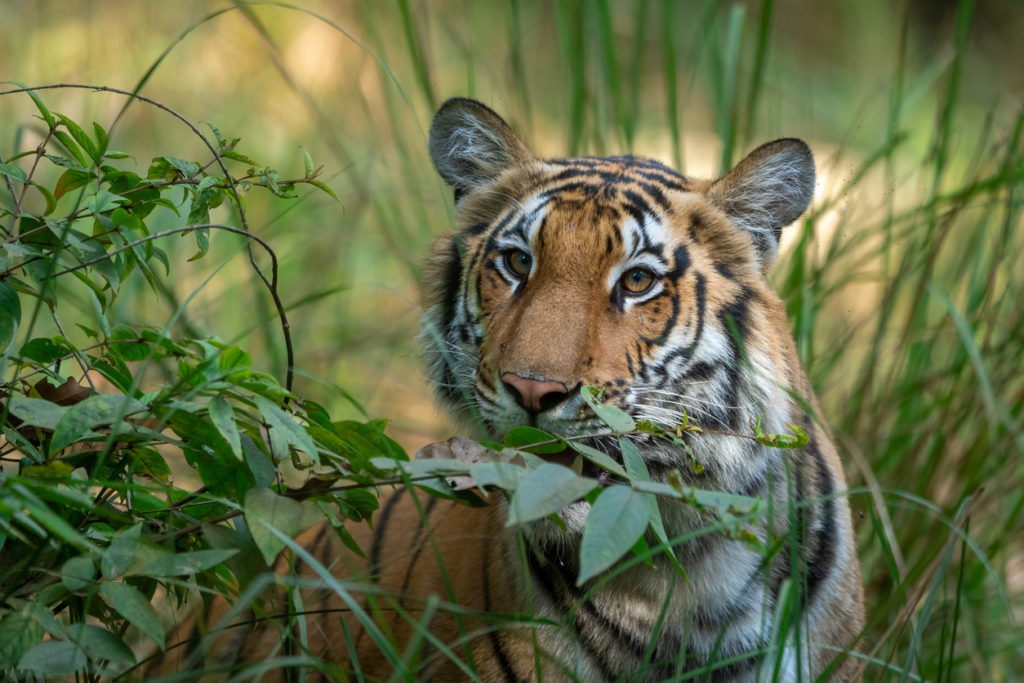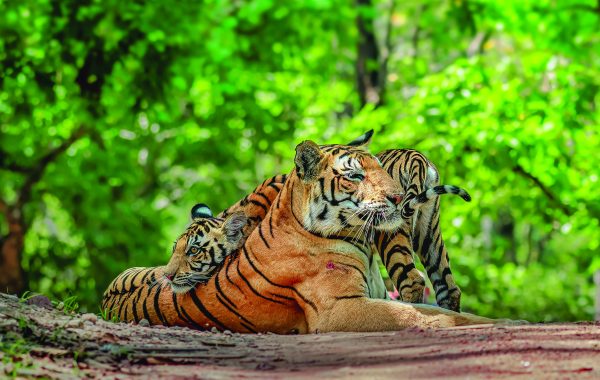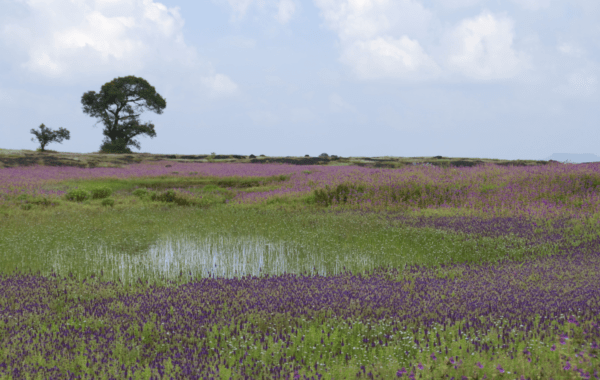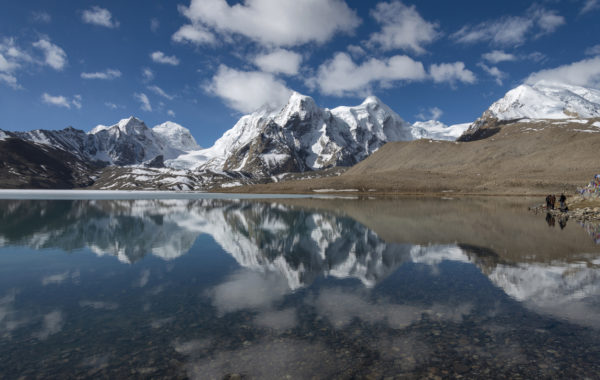Eight epic tiger safaris across India that promise heart-pounding sightings, surreal landscapes, and a front-row seat to nature at its fiercest.
It begins with silence—then a rustle, a flick of striped fur, and the breath-snatching moment when a tiger steps into view. Few experiences compare to tracking wild tigers through India’s dense sal forests and sun-dappled grasslands. Beyond the drama, this is a country that has quietly led the world in tiger conservation, creating vast sanctuaries where nature still rules. Today, over 3,600 tigers roam these reserves—more than anywhere else on Earth. From the bamboo thickets of Maharashtra to the swampy heart of Sundarbans, this curated list reveals seven of the most rewarding parks where the tiger isn’t just a symbol—it’s a pulse you feel in the wild.
Here are India’s 8 Best Tiger Safaris With Travel Tips & Best Times to Visit
Ranthambore National Park, Rajasthan
Ranthambore isn’t just one of India’s top tiger reserves—it’s a living tapestry where wildlife and legacy intertwine. At its heart stands the 10th-century Ranthambore Fort, a brooding stone sentinel that watches over the forested expanse below. Tigers here don’t just prowl the undergrowth—they pose among crumbling ruins and lounge beside lotus-dotted lakes, offering a safari experience straight out of a dream. The dry summer months from April to June offer the best chance of a sighting, though the park opens its gates from October onward, revealing changing hues of the forest with every passing season.
Bandhavgarh National Park, Madhya Pradesh
Tucked into the Vindhya hills, Bandhavgarh is the stuff of safari legend. Known for having the highest density of tigers in the world, this compact yet dramatic reserve has rightfully earned its crown as the Tiger Capital of India. Here, your chances of spotting a big cat are more than just hopeful—they’re thrillingly real. Come summer, tigers frequent the park’s shimmering watering holes, offering heart-racing encounters against a backdrop of sal forests and steep ridges. While the park welcomes visitors from October to June, the golden window for sightings stretches from April to June. Beyond the stripes, expect a vibrant cast of leopards, deer, langurs, and birdlife to complete the wild theatre.
Jim Corbett National Park, Uttarakhand
As India’s oldest national park, Jim Corbett is steeped in legacy—but what truly sets it apart is the rare opportunity to stay inside the jungle after dark. Unlike most reserves that clear out by sunset, Corbett allows overnight stays in select forest zones, letting you fall asleep to the rustle of leaves and wake to the distant roar of a tiger. Set against the Himalayan foothills and threaded with rivers and dense sal forests, it’s a park that feels alive around the clock. The best time for tiger sightings stretches from November to June, with the dry heat of March to June offering prime conditions for tracking movement through the undergrowth.
Kanha National Park, Madhya Pradesh
If Rudyard Kipling’s The Jungle Book had a real-world setting, it would be Kanha. This sprawling central Indian wilderness is a symphony of sal forests, misty meadows, and winding streams—home to one of the most balanced and biodiverse habitats in the country. While tigers prowl its dense interiors, what makes Kanha truly unforgettable is its role as the last stronghold of the swamp deer, or barasingha—an antlered beauty found nowhere else in the wild. Conservation here isn’t just about the big cats; it’s about preserving a delicate web of life. For the best tiger sightings, aim for a visit between October and June, especially during the sun-scorched months of April to June when wildlife gathers near water.
Pench National Park, Madhya Pradesh and Maharashtra
Pench is more than just a tiger reserve—it’s a storybook come alive. With golden grasslands, towering teak trees, and tranquil waterholes, the park doesn’t just shelter wildlife—it stages it. Tigers here are often seen basking in open clearings or padding quietly near the water’s edge, especially between February and April when the forest thins and sightings soar. But Pench’s true charm lies in its literary legacy—it was this very landscape that stirred Rudyard Kipling’s imagination. Many believe these woods to be the birthplace of Mowgli’s adventures, and as you journey through them, it’s easy to see why. Every rustle feels like a page turning.
Tadoba Andhari Tiger Reserve, Maharashtra
Tadoba is raw, untamed, and utterly thrilling—one of India’s lesser-hyped but most rewarding tiger territories. What sets this reserve apart isn’t just the frequency of big cat encounters, but the towering presence of Arjun trees—massive, ghost-white sentinels that rise dramatically from the landscape, especially near the famed Panchadhara waterhole. These trees create a hauntingly beautiful contrast to the usual teak and bamboo groves seen elsewhere, adding both visual grandeur and ecological richness. From March to May, when the heat pushes wildlife toward shrinking water sources, tiger sightings reach their peak. But from October onwards, Tadoba promises a front-row seat to the rhythms of a wilder India.
Sundarbans, West Bengal
There’s nowhere on Earth quite like the Sundarbans. Sprawled across the delta of the Ganges in West Bengal, this is the world’s largest mangrove forest—a mysterious, waterlogged labyrinth where land and sea blur, and the elusive Bengal tiger rules the tides. Sightings here are rare and all the more thrilling, as these big cats have adapted to swim between islands and navigate dense, tangled roots. It’s a different kind of safari—silent boat rides through narrow creeks, the air thick with salt and suspense. With Kolkata as the nearest airport, the journey to the Sundarbans is an adventure in itself, and the destination feels like another world entirely. The best time to visit Sundarbans National Park for tiger sightings is during the winter months, from October to March.
Bandipur National Park, Karnataka
Tucked into the Western Ghats, Bandipur is where lush forests, open grasslands, and meandering streams come together in perfect harmony. But what truly sets it apart is its role in something far grander: the Nilgiri Biosphere Reserve. Unlike stand-alone parks, Bandipur is part of an unbroken ecological mosaic—connecting with Nagarhole, Mudumalai, and Wayanad—offering tigers, elephants, and countless other species the freedom to roam vast, diverse landscapes. Here, a tiger sighting feels even more meaningful, because you’re witnessing nature functioning as it should—fluid, balanced, and whole. From October to May, the park’s changing seasons reveal different moods of the jungle, each worth experiencing.
Before You Go: Essential Safari Etiquette
A tiger safari isn’t just an adventure—it’s a privilege. To truly appreciate the wild and protect its fragile rhythm, a few golden rules go a long way.
- Always maintain silence during game drives; the jungle speaks in whispers, and the quieter you are, the more it reveals.
- Follow your guide’s instructions and never veer off designated trails.
- Avoid using flash photography or playing music—startling wildlife not only disrupts their natural behaviour but puts everyone at risk.
- Think of the safari as entering someone else’s home: respect is the price of admission, and patience is often rewarded with magic.
For latest travel news and updates, food and drink journeys, restaurant features, and more, like us on Facebook or follow us on Instagram. Read more on Travel and Food Network
Related Coverage
7 Incredible Wildlife Sanctuaries and National Parks in Maharashtra Worth Travelling For
India’s Best And Newest Tiger Reserves For Big Cat Sightings























